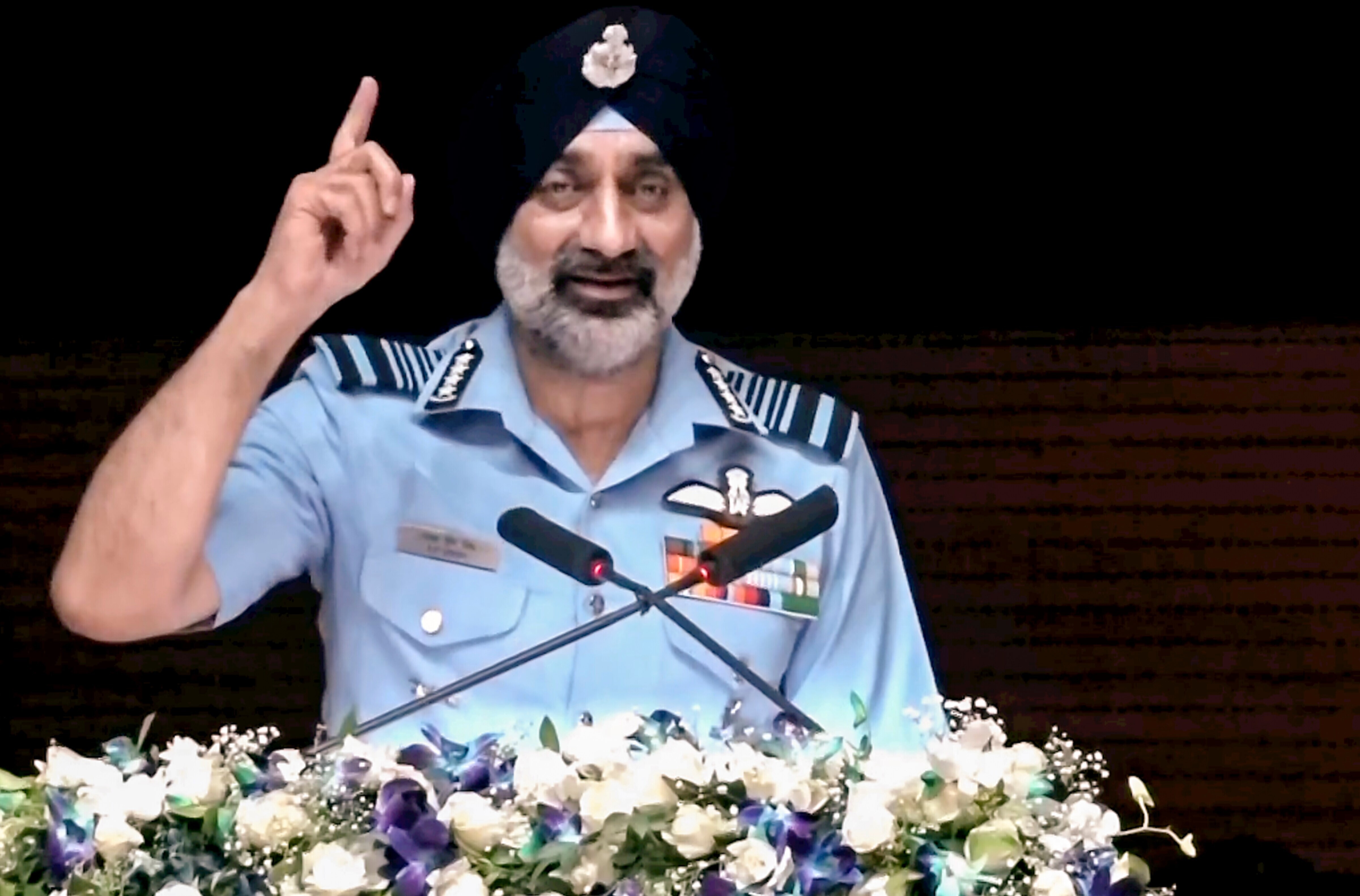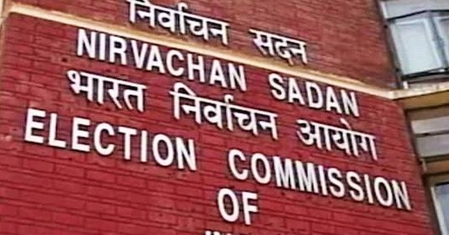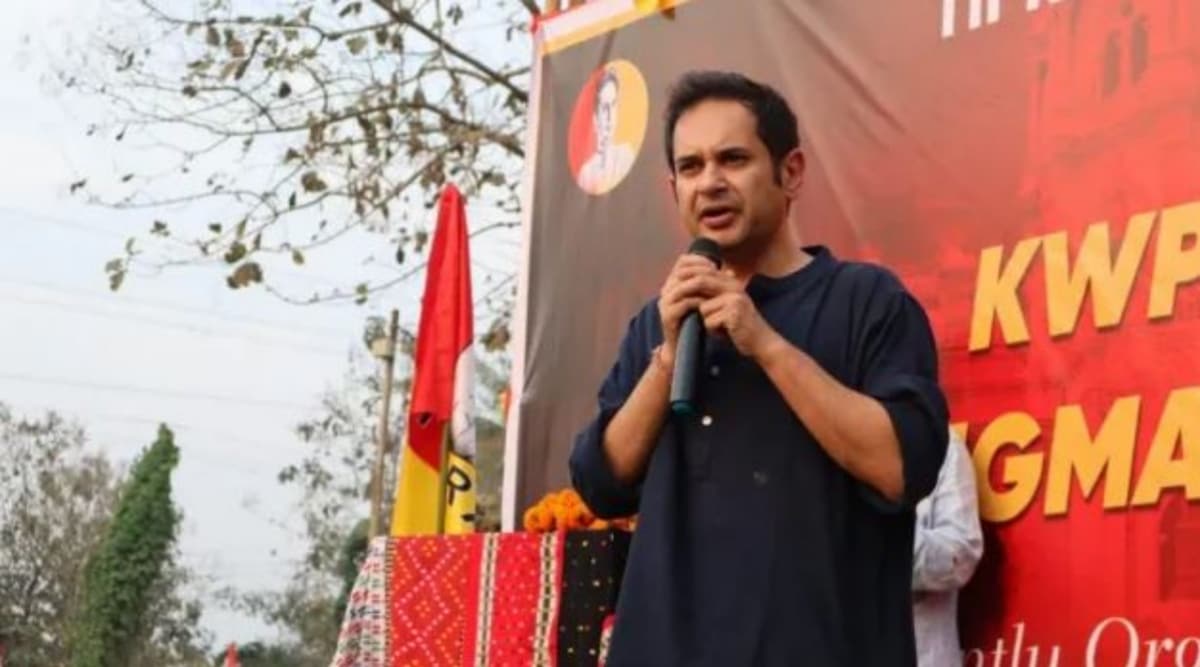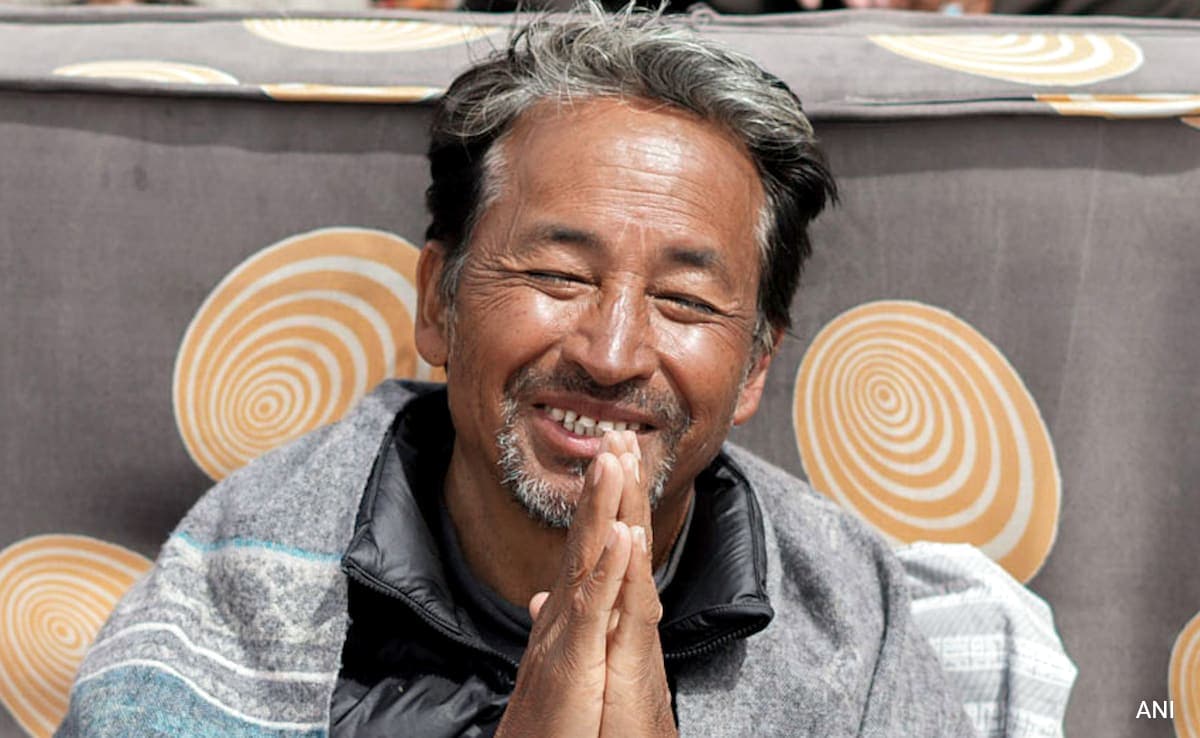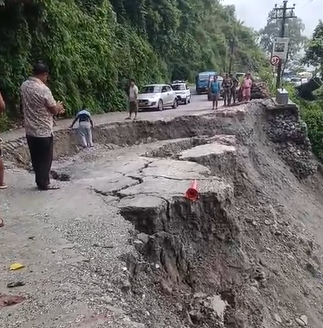“We have an indication of at least one AWC in that AWC hangar, and a few F-16s, which are under maintenance there. We have at least five fighters confirmed killed and one large aircraft, which could be either an aircraft or an AWC, which was taken at a distance of about 300 kilometres. This is actually the largest-ever recorded surface-to-air kill that we can talk about,” he said.
The operation also resulted in a large number of Unmanned Aerial Vehicles (UAVs), drones, and some of their missiles falling into Indian territory. Based on specific intelligence, Singh said, the IAF decided to attack the airfield.
“So the airfield was attacked and the main building where the planning goes on, which was also used as the civil terminal building at times. As far as the Sukkur airbase is concerned, we attacked the UAV hangar and radar site,” he said. “You have the visuals available here – this is the hangar which is flattened, this is the radar site before and after. The AWC hangar was attacked again. Here we have very clearly an aircraft inside where the attack took place,” he said.
Regarding Sargodha, the IAF chief said: “We have grown up in our Air Force dreaming about days like this. Someday we will get a chance. Just so happens that I got a chance before my retirement. We attacked the airfield that had the very hard info on the F-16s,” he added.
According to the Air Chief Marshal, the S-400 air defence system, which India had recently procured, has been a game-changer. “The range of that system had kept Pakistan’s aircraft and UAVs away from the Indian defence system. Because of the S-400 system, Pakistan has not been able to penetrate the Indian air defence system,” he noted.
Singh also said the post of Chief of Defence Staff (CDS) has made a difference in military operations. “The CDS was always there to get us together and iron things out. Whenever we required it, we used to go to the senior leadership and discuss things,” he added. The Air Chief Marshal highlighted National Security Advisor Ajit Doval’s role in Operation Sindoor, helping bring other agencies and forces together. When the operation began, military chiefs discussed in detail the eventualities, possible outcomes, and how India should react, he underlined.
On the takeaways from Operation Sindoor, Singh said: “The biggest takeaway of the operation has been the primacy of air warfare has come to the forefront once again. People have realised that air warfare is the first responder that any country has and air warfare is one which can actually react in a quick time, attack deep inside with precision, and just achieve your objective without any collateral.”
However, Pakistan’s Defence Minister Khawaja Asif on Saturday claimed that no aircraft of the military was hit or destroyed by Indian armed forces during the recent conflict. “Not a single Pakistani aircraft was hit or destroyed by (the) Indian (side),” Asif claimed in a post on social media. “For three months, no such claims were voiced — while Pakistan, in the immediate aftermath, presented detailed technical briefings to the international media…,” he added.
Asif claimed that the losses on the Line of Control for the Indian armed forces were disproportionately heavier as well.
“If the truth is in question, let both sides open their aircraft inventories to independent verification—though we suspect this would lay bare the reality India seeks to obscure,” he added.


